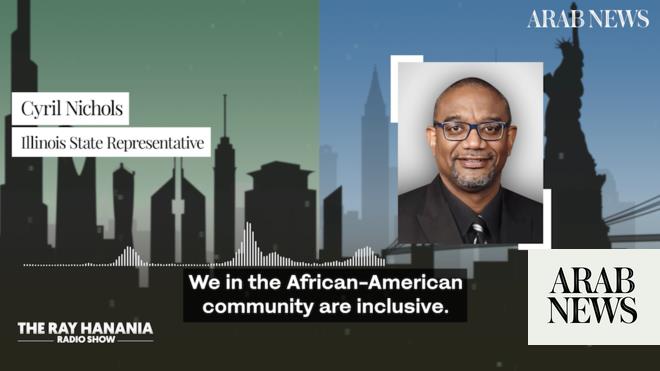
As the political polarization in the US has increased, many Americans have placed much of the blame on a growing urban-rural divide. The gap between Americans who live in more urbanized areas and those in more rural areas is real but the discussion about it suffers from problems with definitions, data and a lack of nuance.
Urbanization in the US over the past century has fueled growing divides between the cultural and political views of urban and rural Americans. The political rise of Donald Trump exacerbated an already prevalent sense that Americans in urban and rural areas no longer understand each other.
One challenge for any discussion of this issue is the lack of an agreed common definition of “rural.” Some researchers categorize population groups as “metropolitan cores, “metropolitan suburbs,” “micropolitan” areas (smaller towns), and “rural” areas that have few people living in concentrated areas. Others use different categories; for example, the Census Bureau talks about “urbanized areas” which have populations of 50,000 or more, and “urban clusters” with 2,500 to 50,000 residents.
To further complicate matters, some analysts use data based on counties, which might include urban and rural areas, while others use “census tract” or other data.
This article uses “rural” to denote small towns and less-populated areas, and “urban” to include cities and suburbs.
With the caveat that different researchers use differing definitions and data, the available evidence suggests that about 14 to 19 percent of the US population lives in rural areas. While many people might think of the American West when imagining rural America, the Census Bureau notes that more than 64 percent of the rural population lives east of the Mississippi River, and nearly half of rural residents are in the south of the country. There are rural areas in the northeast, midwest, west and other parts of the country, and large areas in Alaska.
Rural America is indeed more white than urban America, but it is increasingly diverse in racial and ethnic terms
Kerry Boyd Anderson
The stereotypical view of rural America envisions a mostly white population focused on agricultural work. However, that image is outdated. Rural America is indeed more white than urban America, but it is increasingly diverse in racial and ethnic terms. And while agriculture remains a major economic driver, it accounts for less than 5 percent of “wage and salary jobs in rural areas,” according to a 2017 Department of Agriculture report.
Rural America includes small college towns, Native American communities, beautiful areas that attract tourism, and close-knit communities going back generations. Many Americans who choose to live in these areas enjoy the benefits of a smaller community, including a lower cost of living, no traffic jams and the lack of urban hustle and bustle.
At the same time, much of rural America is struggling from a long-running trend of population loss, as working-age people increasingly leave and head for urban and suburban areas, and much of the remaining population is aging.
Government statistics show significant declines in the populations of rural areas over the past few decades. This trend has created challenges in providing services, most notably healthcare; the number of hospitals, emergency rooms, doctors and other medical services is declining, and even disappearing completely, in some rural areas.
Poverty is not a problem in all rural areas but it is a persistent challenge in many. A 2020 Brookings Institution analysis demonstrated that persistent poverty is concern both in rural areas and cities.
A more nuanced understanding of the benefits and challenges that come with living in rural America could therefore inform a more useful discussion about the urban-rural cultural and political divide. However, many political commentators, politicians and even regular Americans willingly embrace an overly simplistic image of urban versus rural.
Government statistics show significant declines in the populations of rural areas over the past few decades
Kerry Boyd Anderson
As the authors of several recent fiction and nonfiction books have pointed out, Americans who live in cities and suburbs, especially those on the coasts, often are disdainful of “flyover country,” Appalachia and the rural south. They like to perceive themselves as superior, better educated, more cultured and more tolerant than rural Americans. These assumptions are common within progressive politics and elements of the entertainment media. Rural Americans are well aware of this and resent it.
It also is true that people from small towns and rural areas like to perceive themselves as superior to those who reside in cities. They view themselves as more sincere, “down to earth” and devoted to faith and family — in short, they see themselves as the “real Americans.”
This perception is strongly represented in Republican politics and some cultural tropes. For example, many romantic movies and books tell the tale of a young woman who leaves her small town for the bright lights of the big city, only to return home to heal among more-caring people after becoming disillusioned by life (and men) in the concrete jungle.
The divide is more blurred than the way it is often depicted but it is nonetheless real and challenging. Most countries have some form of this divide, as urban and rural areas naturally develop different cultures, values and economies. The trouble comes when urban and rural citizens begin to feel both superior and bitter toward each other.
In the US currently, issues around politics, identity and religion, among other things, have been layered on top of urban/suburban/micropolitan/rural maps, intensifying the sense of “difference.”
By ignoring the problems facing rural America, as some of its defenders do, or portraying cities as inherently superior, as some urban advocates do, we only deepen the divides while undermining ways in which life might be improved for all Americans.
It is time for Americans to recognize the real differences in ways of life between urban and rural areas, while also recognizing that they both need each other.
Kerry Boyd Anderson is a writer and political risk consultant with more than 18 years of experience as a professional analyst of international security issues and Middle East political and business risk. Her previous positions include deputy director for advisory with Oxford Analytica. Twitter: @KBAresearch
Disclaimer: Views expressed by writers in this section are their own and do not necessarily reflect Arab News" point of view












